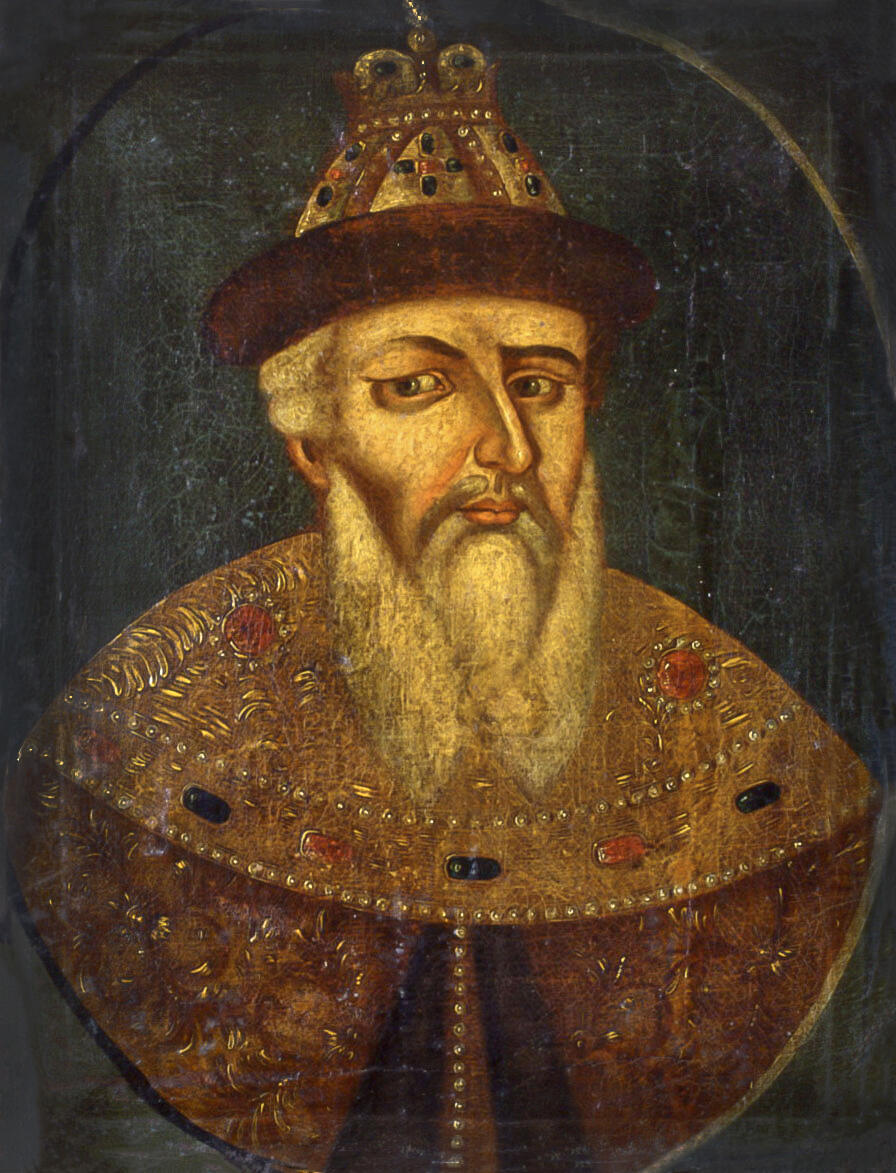Parsunas appeared in Russia in the late 16th century. Like icons, they were still rather schematic, flat, and patterned, and were specific only in details. First and foremost, a parsuna was intended to demonstrate the social status of the portrayed person. Most parsunas cannot be traced to a particular artist: in the 17th and 18th centuries when portrait art began to develop in Russia, portraits were created mainly by artists from icon-painting workshops where the name did not matter. The parsuna from the Nizhny Tagil Museum of Fine Arts was also painted by an unknown artist.
There is no doubt that the artist was Russian and most likely he worked at an icon-painting workshop in Moscow. In the second quarter of the 17th century, Russian artists became fascinated with old Moscow and Ivan the Terrible in particular. An iconographic image of the tsar was designed. Apparently, this is when the parsuna of Ivan the Terrible was created.
This parsuna is likely to have been copied from an unknown original, possibly, a portrait of Ivan the Terrible from Uglich. The artist strove to emulate the traditional image of a tsar as closely as possible. The ruler of All Russia has an ascetic face and an attentive and piercing gaze. He wears the Monomakh Cap and a shoulder mantle. All of this clearly indicates that the portrayed person is a tsar. It is also obvious that the parsuna was inspired by icons: the image is characterized by a specific color palette (ocher, cinnabar, white, and green), an elongated face, a flat shoulder mantle, and a dark background. However, the portrait is painted not with tempera on board like an icon, but with oil paints on canvas, and the face is formed by a play of light and shadow — this indicates the influence of Western European art.
The portrait entered the museum’s collection as an image of Tsar Aleksey Mikhaylovich, or Alexis of Russia. He was the father of Peter the Great and went down in history under the moniker “the Quiet”. On June 17, 1914, the portrait was transferred to the Art Department of the Russian Museum from the so-called Commemorative Department of Alexander III, where it was kept as a portrait of Tsar Alexis. However, the facial features are not similar at all to the traditional written descriptions of Tsar Alexis. The art historian Georgy Borisovich Zaitsev tried to analyze who of the 19 Russian tsars was depicted in this portrait. He compared the descriptions of the tsar’s appearance in all written sources and painted portraits with the reconstruction of the face of Ivan the Terrible, created in 1964 by the academician and anthropologist Mikhail Mikhailovich Gerasimov, and concluded that the depicted person was no other than Tsar Ivan the Terrible.



